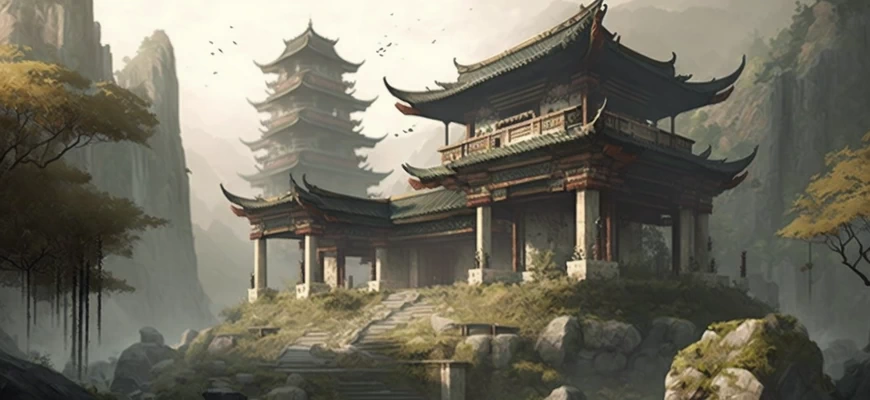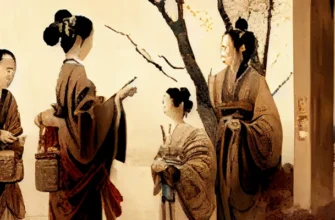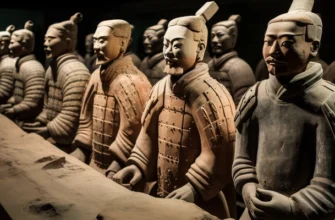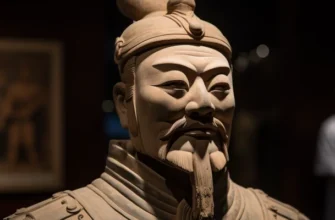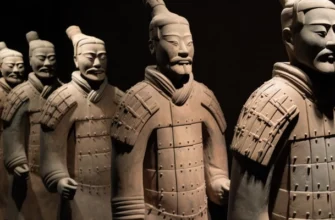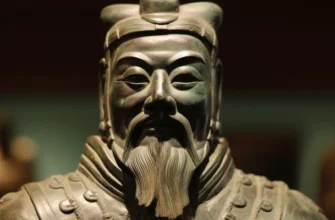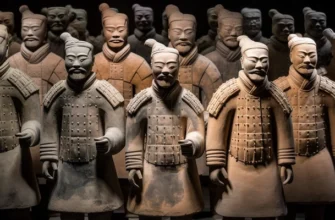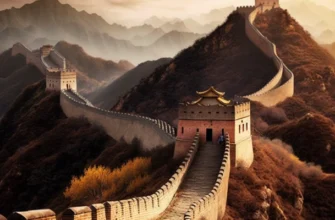China is one of the oldest civilizations in the world. Its history spans more than 5,000 years and includes a number of significant achievements in culture, philosophy, science, and technology. China is known for its inventions, such as the compass, porcelain, gunpowder, and others. Chinese philosophy and religion also have an impact on world culture. Today, China is one of the most influential countries in the world, and its culture and technology are recognized in many fields.
- Culture and art
- Philosophy and religion
- Science and technology
- Inventions: from porcelain to the compass
- The development of art from ancient times to the present
- Painting, sculpture and architecture
- The influence of Chinese philosophy and religion on the world
- Confucianism and Taoism
- Buddhism in China
- Scientific achievements and technology
- Technological achievements and their impact on the modern world
- Conclusions
Culture and art
Culture and art played an important role in the development of ancient Chinese civilization. Chinese art encompasses a variety of forms, from painting, sculpture, architecture, to crafts and household items. Chinese art combines traditional symbolism, the ability to use colors and shapes, and innovations in technique and materials. Chinese culture is also known for its various festivals and traditions that began to take shape in ancient times and influence the lives of Chinese people to this day. All of these cultural and artistic traditions have helped to create a multilayered and diverse culture that continues to influence world culture to this day.
Philosophy and religion
Philosophy and religion are important components of ancient Chinese culture. The philosophy of ancient China is known for its schools of thought, such as Confucianism, Taoism, and Legalism. These philosophical schools addressed various aspects of life, the relationship between humans and nature, morality, and politics. Chinese religion reflects the diversity and perception of the world by the Chinese. The most common religions in China are Confucianism, Taoism, Buddhism, and folklore religions. All of these philosophical and religious traditions have had a major impact on China’s culture, art, literature, and politics, and continue to influence Chinese life to this day.
Science and technology
Science and technology were important components of the development of ancient Chinese civilization. Chinese inventions, such as the compass, paper, porcelain, and gunpowder, have had a major impact on world history. The Chinese are known for their research in such fields as astronomy, mathematics, medicine, and botany. In ancient times, the Chinese developed technologies such as agriculture, silk and ceramics. These achievements have helped China become a well-known world leader in many industries.
Inventions: from porcelain to the compass
Ancient China was famous for its inventions that had a great impact on world history. Chinese porcelain, the invention of paper and printing, the compass, and gunpowder – these technologies were unsurpassed achievements of their time. In addition, Chinese inventions such as the windmill and iron anvils had a significant impact on agriculture. The Chinese are also known for their achievements in fields such as mathematics, astronomy, medicine, and botany. Many of these inventions have left their mark on global science and technology to this day.
Ancient Chinese civilization has had a significant impact on the modern world. Culture and art, philosophy and religion, science and technology, language and literature – all these aspects of life reflect the effects of the ancient Chinese heritage. Modern China remains a leading global power, and the spirit of ancient Chinese civilization is palpable in its culture, science, and technology. In addition, the Chinese diaspora living around the world continues to recreate and transform the traditions and heritage of ancient Chinese civilization.
The development of art from ancient times to the present
The art of ancient China originated more than 5000 years ago and has evolved throughout the country’s history. Traditionally, Chinese art includes painting, calligraphy, sculpture, and various crafts such as ceramics and carpets. It has been strongly influenced by Chinese philosophy, religion, and history.
In the early Shang Dynasty, Chinese art was characterized by distinctive symbolism and decorative images on ceramics and bronze. During the Han Dynasty, many new techniques emerged, including oil painting on silk, as well as cave paintings.
Later, during the Sui and Tang dynasties, Chinese art reached its peak, and was heavily influenced by Buddhism and other religious beliefs. During this period, many majestic buildings were created, such as the Palace of Heavenly Tranquility, and new techniques were developed, including mother-of-pearl processing and papermaking.
In modern times, Chinese art continues to evolve and is characterized by a wide range of styles and techniques. It has become popular around the world and continues to reflect China’s cultural and historical heritage.
Painting, sculpture and architecture
The painting, sculpture, and architecture of ancient China developed over many thousands of years and were characterized by distinctive techniques and styles at different stages of the country’s history. It is known that Chinese art originated in the Neolithic period and has been constantly evolving over time.
Genres such as landscape, portraiture, animals, and flowers were popular in ancient Chinese painting. Chinese artists used a variety of techniques, such as oil painting, watercolor on silk, and wall paintings.
The sculpture of ancient China featured a variety of themes, including gods, divine animals, and humans. Many sculptures were created for use in religious ceremonies or as decorative elements in buildings.
The architecture of ancient China was characterized by a variety of styles and forms. A typical building of the time was a pagoda, which was used as a temple or a place to store holy relics. Many other buildings were also created, including murals and gardens.
Nowadays, Chinese art has become popular all over the world and continues to reflect the cultural and historical heritage of ancient China.
The influence of Chinese philosophy and religion on the world
Chinese philosophy and religion have had a significant impact on the world, especially in Asia. Confucianism and Taoism, which originated in China, have influenced the culture and arts, as well as the political and social organization of many countries. Buddhism, which was brought from India to China, became one of the most widespread religions in the world and influenced the cultural and religious traditions of many countries in East and South Asia. Chinese philosophy has also influenced Western culture, including philosophy, art, and literature.
Confucianism and Taoism
Confucianism and Taoism are two of the most influential religious and philosophical traditions of ancient China. Confucianism aimed to improve society by teaching moral values and ethics, as well as the practical application of this knowledge in politics and everyday life. Taoism, in turn, believes that the most important thing is to develop harmony with nature and the cosmos. It promoted the art of non-resistance, or “wu-wei,” which is to act in accordance with nature and circumstances, without undue strain. Both traditions have greatly influenced the culture, art, philosophy, and politics of China and other Eastern countries.
Buddhism in China
Buddhism was first brought to China from India in the first century A.D. It quickly found followers among the elite and the common people, and became one of the three major religions in China, along with Confucianism and Taoism. Buddhism brought many new philosophical ideas and religious practices that became an important part of Chinese culture. It also had a significant impact on Chinese art and architecture, with statues of Buddha becoming common objects of artistic creation. Today, Buddhism continues to be an important religion in China, but its practices and ideas are often combined with other traditions such as Confucianism and Taoism.
Scientific achievements and technology
Ancient China had significant achievements in science and technology. Chinese inventions included the compass, gunpowder, paper, printing, the windmill, and others. Chinese scientists also made significant contributions to various fields of science, such as mathematics, astronomy, medicine, and others. For example, Chinese mathematicians developed the decimal system, created the Pythagorean Theorem, and studied quadratic equations. Chinese astronomers studied the movements of planets, stars, and other celestial objects, and developed a calendar. Chinese medicine is known for its traditional healing methods and techniques, such as acupuncture and herbal teas. To this day, the scientific achievements and technologies of ancient China have a significant impact on our world and continue to be explored in various fields of science and technology.
Technological achievements and their impact on the modern world
Ancient Chinese inventions, such as the compass, paper, porcelain, and inventions in medicine, mathematics, and astronomy, have greatly influenced the development of the modern world. Today, China is one of the leading countries in technology, space exploration, and artificial intelligence, based on centuries of experience and tradition. Also, Chinese technologies play an important role in the development of the global economy and trade.
Conclusions
China’s ancient civilization has left a profound impact on the modern world in many ways, including culture, philosophy, religion, science, and technology. The centuries-old history and traditions of China are reflected in their modern life and are an invaluable asset to humanity. In addition, technology and scientific achievements, inventions and cultural art forms originating from China play an important role in the development of the modern world and contribute to its progress. The ancient civilization of China is an example of how preserving traditions and innovation can interact and contribute to the development of society.
